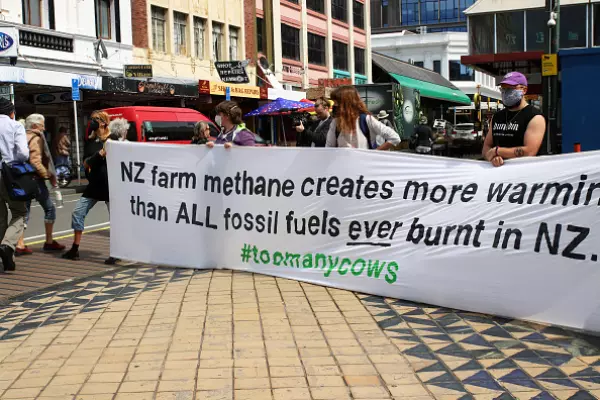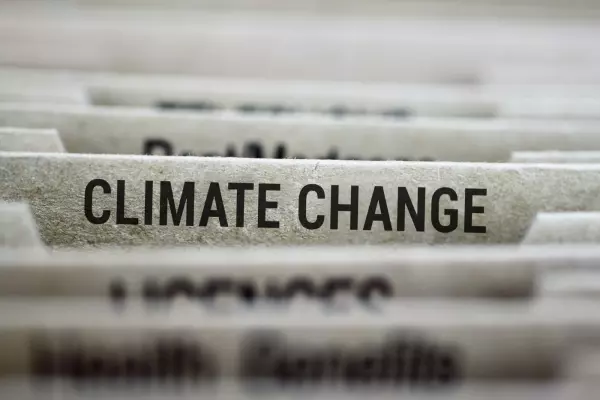Over the past three decades, United Nations climate change conferences have had their peaks and troughs.
The 2015 Paris COP was certainly a peak. It has charted a new, universal climate change regime and established a new temperature goal. But the long-term trend of these conferences is that they are of declining marginal utility.
Why?
It’s mainly due to their success in helping shift the world towards the massive transition that will be needed to halt rising temperatures. That realisation is now mainstream. Exactly how much climate change is still to be endured now depends on willingness to act – and international treaties aren’t going to compel unwilling players.
Governments signalled that they mean business by the universal membership and record entry into force of the Paris agreement.
That was a strong signal not only between the governments themselves, but also to the many non-state actors whose decisions will determine the success or failure of the Paris goals.
Business, cities and local government, non-government organisations, investors and consumers are getting on with it. In short, the action is moving away from negotiation towards implementation.
Less effective
Climate change conferences aren’t going to end any time soon, but they are becoming less important and effective over time, in part because the price to pay in terms of bureaucratic inefficiency and lowest common dominator outcomes is getting too high.
It’s hard to see how the UN process will deliver a simpler and more effective version of the Kyoto-era Clean Development Mechanism, for instance.
So states and businesses will go it alone, with their own arrangements and coalitions of the willing. Over time, we will need the UN less as countries work out their own bi- and multi-lateral arrangements and get on with their own domestic transitions.
The most recent conference, COP26, in Glasgow completed some laborious tasks regarding the “rules” surrounding the Paris Agreement, which had been bogged down in stale North-South disputes.
It also went some way towards closing the emissions gap – the gap between the carbon budgets implied by the global collective aspiration of “holding the increase in the global average temperature to well below 2°C above pre-industrial levels and pursuing efforts to limit the temperature increase to 1.5°C” and the sum of national emissions reductions commitments.
High-fives for ambition
For the first time, the sum of national emissions reductions commitments would, if delivered on, result in expected warming below 2°C.
For many of us, this is a really big deal.
For others, it is nowhere near enough.
At worst it seems mildly good news. Gone are the days of democracies making vague promises about maybe getting around to emissions reductions at some point in the future.
Instead, we have moved to a new era, in which governments make very specific promises regarding huge emissions reductions on a carefully scheduled timetable, to be delivered almost entirely by their successors.
This generates political credit for today’s leaders in the form of high-fives for “ambition”, while leaving the political costs of increasing carbon prices and regulating high-carbon activities to subsequent administrations.
Many of the world’s democracies now have a strong commitment for the future, coupled with policy regimes that appear far too weak to reduce emissions far enough for this to be credible, or even plausible.
NZ’s ‘uniquely massive gap’
In New Zealand’s case, this manifests itself as a uniquely massive gap between what we think we can do at home and what our government has volunteered to take responsibility for.
Committing huge sums of money to offshore carbon purchases (in NZ’s case about the equivalent of the Auckland light rail project) doesn’t resolve the issue either, because these risk being unsustainable in the face of competing future demands on the public purse.
Not only do future governments have to balance the budget; they will have to run surpluses to pay for the promises already made.
Simply put, there is a disconnect between plans for decarbonisation and observed behaviour.
To stay under 1.5°C requires global CO2 emissions reductions of 7.5% per annum, every year, for the next 30 years. Covid depressed emissions of CO2 by about 6% in 2020, so the 1.5°C goal requires a permanent “covid-and-a-half” reduction (with no rebounds), every year, for 30 years.
The country with the best record of decarbonisation is probably the United Kingdom, which is also the world champion of per capita warming if you take a historical perspective. The UK has achieved emissions reductions at an annual rate of 2.4% between 2007 and 2019.
So the world’s leading emissions reduction programme has progressed at about a third of the rate required, globally, to remain under 1.5°C.
Wooing the median voter
As historian John Lewis Gaddis defines it in his On Grand Strategy, strategy is the task of matching capabilities, which are finite, with aspirations, which are boundless.
Capabilities are the range of technologies, institutions, investments, and alternatives available to communities as they try to stabilize the climate.
A country’s ability to decarbonise successfully depends on developing those capabilities and creating around them a group of policies that are effective, stable over time, and politically sustainable to the median voter.
The median voter, or the bellwether political actor in those places which do not enjoy our level of political agency, determines how fast countries can move on climate change.
This is not a counsel of despair. Median voters really do move: 20 years ago climate sceptics were thick on the ground and now they are not. Support for climate policies has grown markedly during the 21st century, as many climate researchers and policy veterans can attest.
Triggering though it is for those of us who wish to see more climate action, the bottom line is that climate action has to fit around democracy, not the other way around.
The problem for any government is making credible promises regarding outcomes that can only be assessed in the future.
This is a general issue. In a landmark paper, Nobel Laureate Tom Schelling made the following observation regarding numerically precise emissions reductions targets:
“The current popular expectation is that participation in any greenhouse regime will take the form of commitments to specified percentage reductions of emissions below those of some specified year, like 1990 or 2000.
“I cannot help believing that adoption of such a commitment is an indication of insincerity. A serious proposal would specify policies, like taxes, regulations, and subsidies and would specify programs (like research and development), accompanied by very uncertain estimates of their likely effect on emissions.”
Schelling’s point here is that Governments have limited direct control over emissions, and certainly not the fine control over time that targets and timetables imply. This is compounded by making distant promises, the quality of which will only be assessed decades after your turn in office.
The temptation to set an ambitious goal, enact weak policy, and then leave it to fate is amplified in democracies, where there are strong political pressures to meet instantaneous preferences, and pressures against inflicting short-term pain even if it is clearly for long-term benefit.
Honesty required
As a group, developed countries have taken on the obligation to more than treble the world’s best effort to date. Next year, they will face pressure to promise even more. They probably will.
But outcomes don’t depend on aspirations alone. Outcomes depend on matching aspirations to capabilities. Being too ambitious can lead to as bad outcomes as being too timid.
People in the climate bubble often treat ambition as a moral more than an economic issue in a “more is always better” sense”, perhaps since the dangers of over-mitigation seem extremely remote. But there is substantial danger that aspirations will outstrip capabilities.
History is littered with examples of the dangers of excessive ambition as well as too much timidity. Climate policy provides its own example, too: negotiators from the United States had a strong role in shaping the Kyoto Protocol, without realistically assessing the likelihood of ratification by their own Senate.
The Copenhagen COP in 2009 was billed as the last chance to save the planet. It ended in a train wreck, from which some more modest achievements were later salvaged.
Delivering good outcomes in climate policy is not just about giving negotiators and ministers free reign to make ever-grander promises.
It is at least as much about ensuring policy can deliver on the promises already made.














